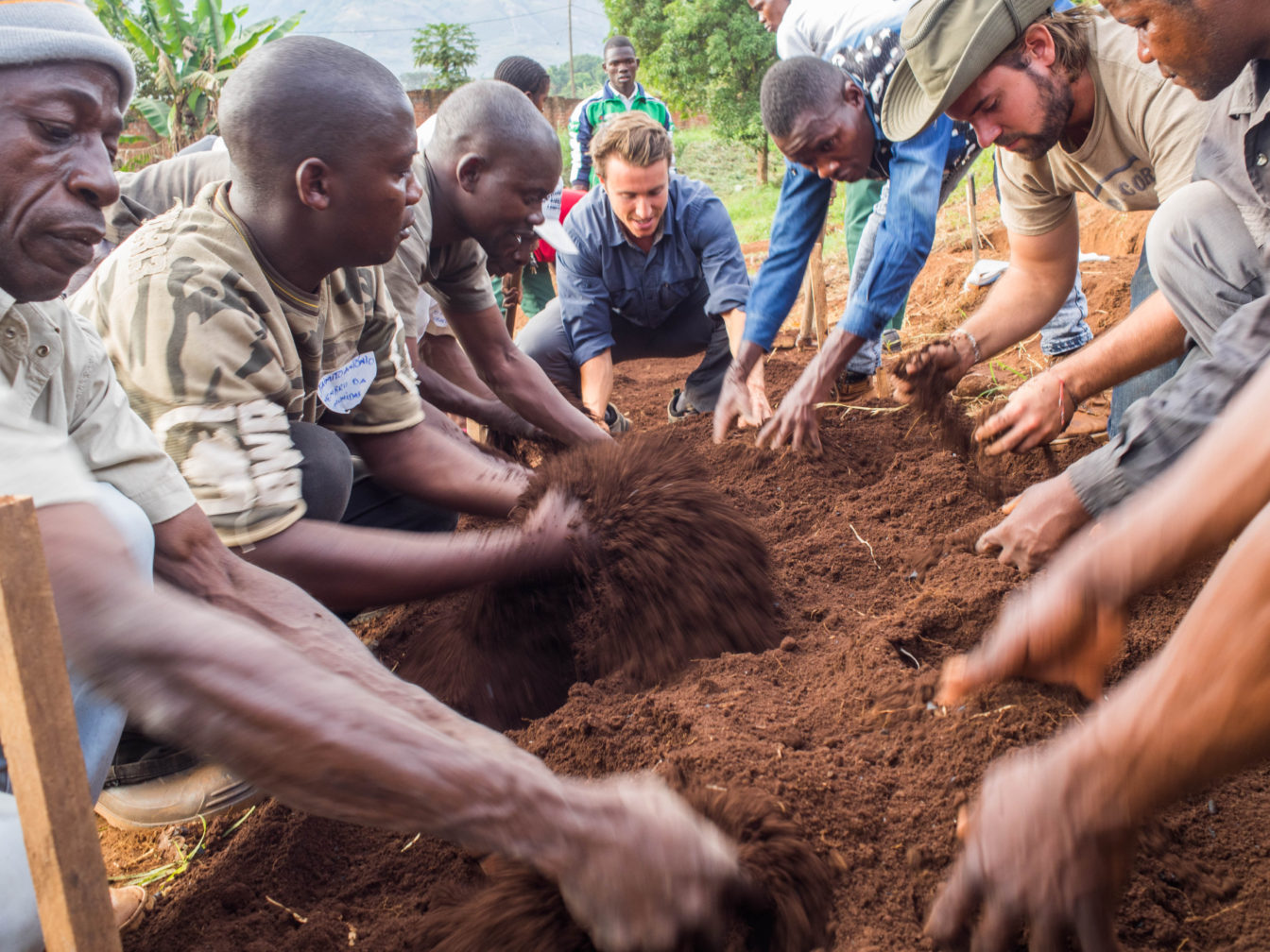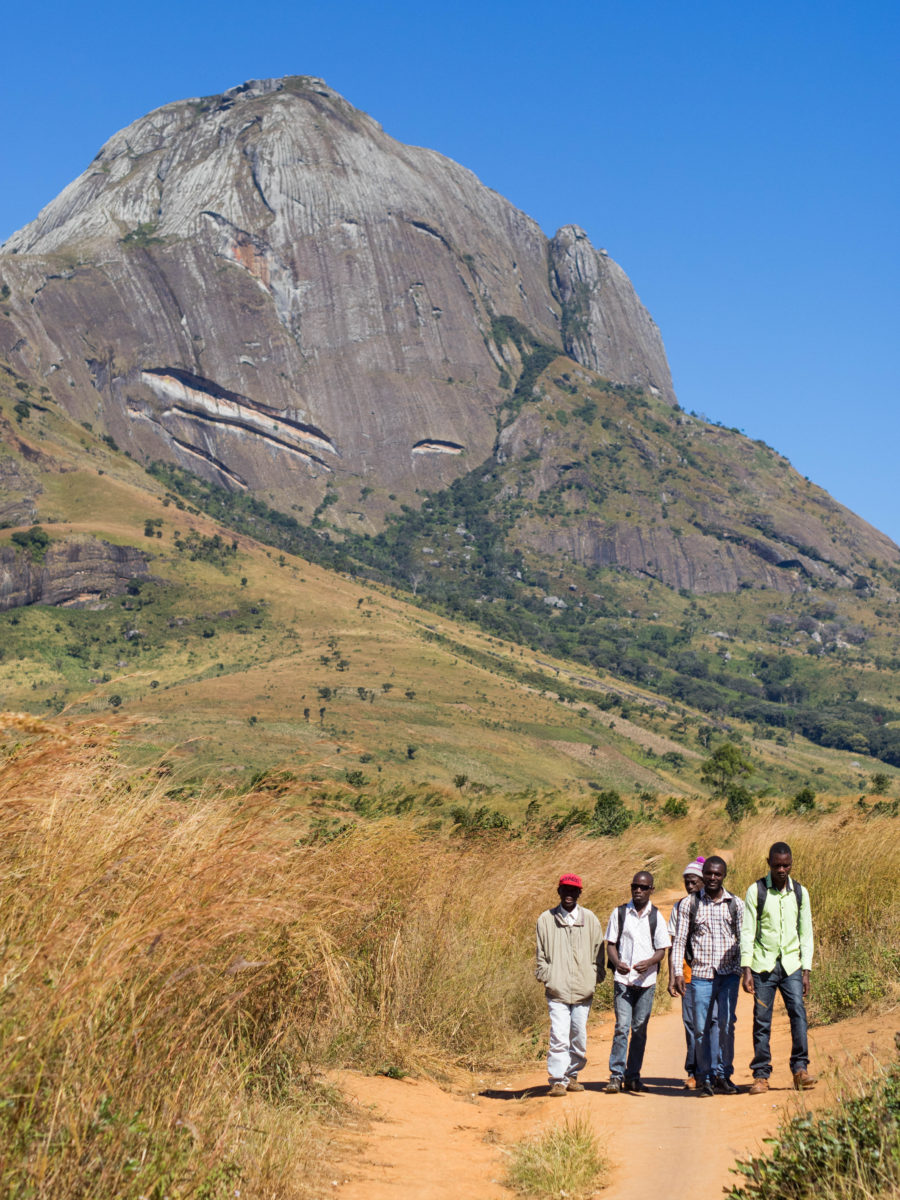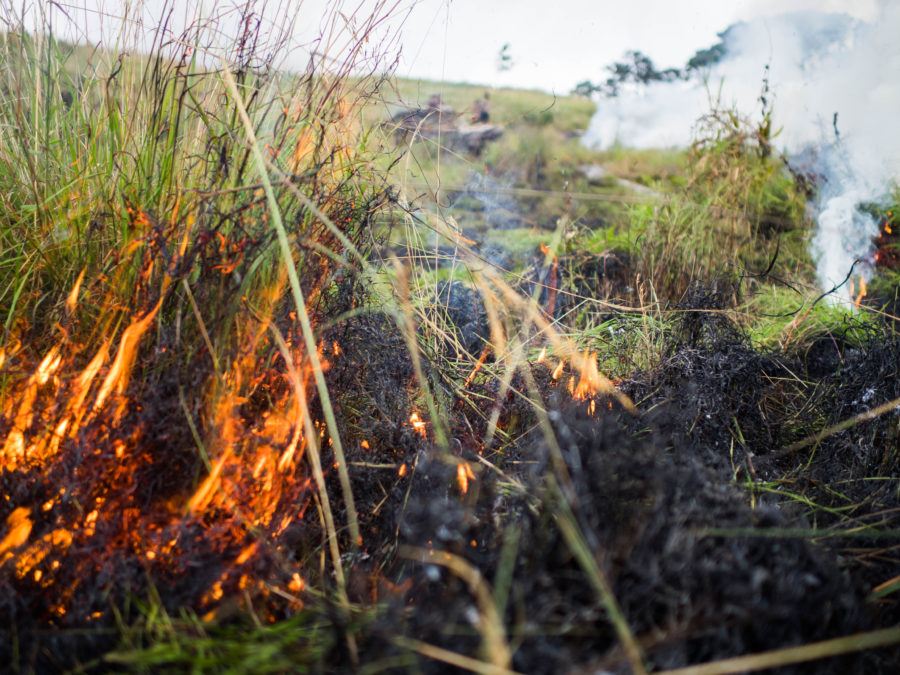Fact: the world of international development is riddled with silos. While we all profess to working towards a common goal – be it the betterment of human life or a safer, more protected planet – we fall short of this interdisciplinary approach time and time again.
As an environmental engineering grad student at Stanford, I hear that word all the time: interdisciplinary. Every day I see another call for proposals in the academic world from a funding source asking for projects that cross departmental lines, combining engineering and public health or business with diplomacy. Daily, I listen to seminars where the speaker defines a problem and then discusses the need for researchers from a vast array of backgrounds to develop a solution. But when it comes down to it, each organization focuses on one pillar of the larger solution and the responsibility ends up being on groups like USAID or the Bill and Melinda Gates Foundation to bring a multitude of organizations together to work synergistically.
The truth is, we’re not that great at working together.
But now and again, we nail it.
The interaction between agriculture and nature conservation has always been a tenuous one. Historically, the nature conservation sector has been distrusting of the agriculture group because they fear that agriculture will only continue to grow in size and take over any and all attempts at nature conservation. On the flipside, the agriculture group avoids the nature conservation group because they assume those conservationists want a 100% pristine environment, free of human encroachment that completely ignores the needs of the humans who have lived on the land for thousands of years.
This interaction is what brings me back to Mount Namuli. It is a 7,500 ft tall granite monolith that is the second highest peak in Mozambique and is home to incredible forests and biodiversity, and surrounded by people that have lived there for centuries.
I’ve been working with the Legado: Namuli Initiative for the last two years and when I joined the team, the question was, “How do we achieve nature conservation of Mount Namuli?” The answer quickly materialized, we must work directly with all of the communities around the mountain. But who are we to come in and tell them they have to change, giving them no incentive to do so? How do we convince these communities to stop the slash and burn agriculture that they have been doing for generations and teach them about natural resource management? The answer: An interdisciplinary approach is necessary – we must get the conversation going between the nature conservation and agriculture groups.
This week, in Gurue, Zambezia, Mozambique, Thomas Cole and I ran a permagarden training for our field team and representatives from six surrounding Mount Namuli communities. The permagarden training exists to teach rural communities about the principles of water and soil conservation, management of gardens as well as using locally available resources to increase production. The training is largely hands-on and gets all the participants working together to construct a 5m x 5m garden using methods that can be applied to small gardens and larger fields to capture and store water, increase soil health and ultimately increase production.
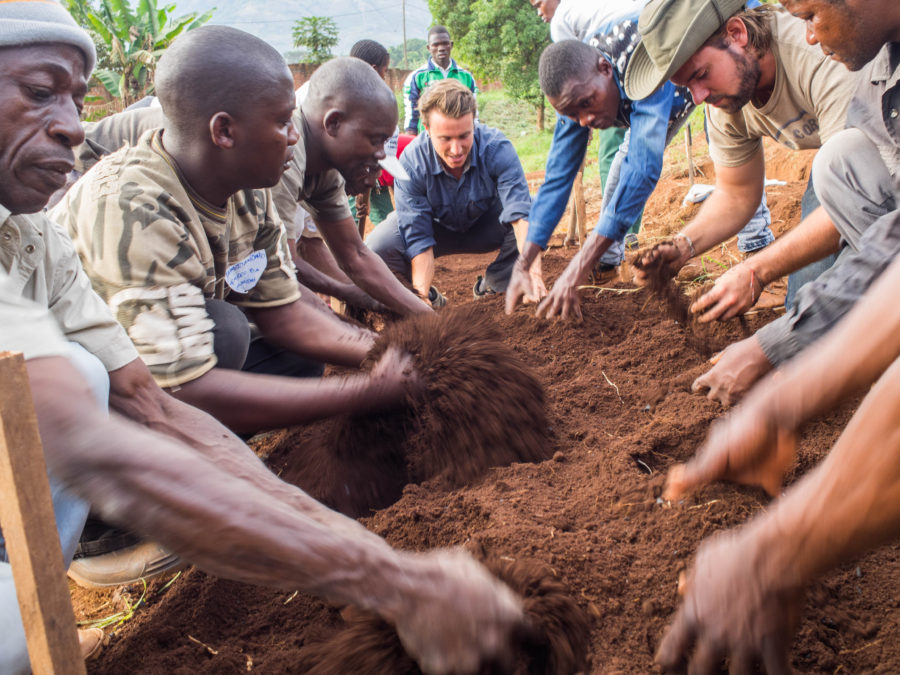
The team mixing the compost and other soil additives into the top soil layer. Left to Right: Dias Antovano, LUPA; Jaimito Antonio, Nautela Community; Mendes Costa, Nicão Community; Eric Wilburn, Legado; Ramiro Manla, AMG; Anthony Muron, PCV; Jorge Sicelo, Muruí.
Permagarden, or on a larger scale, resilience agriculture, is a linchpin in our conservation goals. Our theory is that if we can increase production and enable local farmers to continually farm a single field for multiple years instead of opening new fields annually, we would be able to reduce the deforestation and encroachment on Mount Namuli. From a rural development perspective, as all of these communities around Namuli are sustenance farmers, therefore increasing their production could have a huge health and economic impact.
When I proposed this plan to our nature conservation advisors, they were skeptical. Their fear was that if we increase farm productivity, why wouldn’t the farmers simply continue opening new fields and increasing production to sell more at local markets, ruining our chances for nature conservation. A valid and logical skepticism.
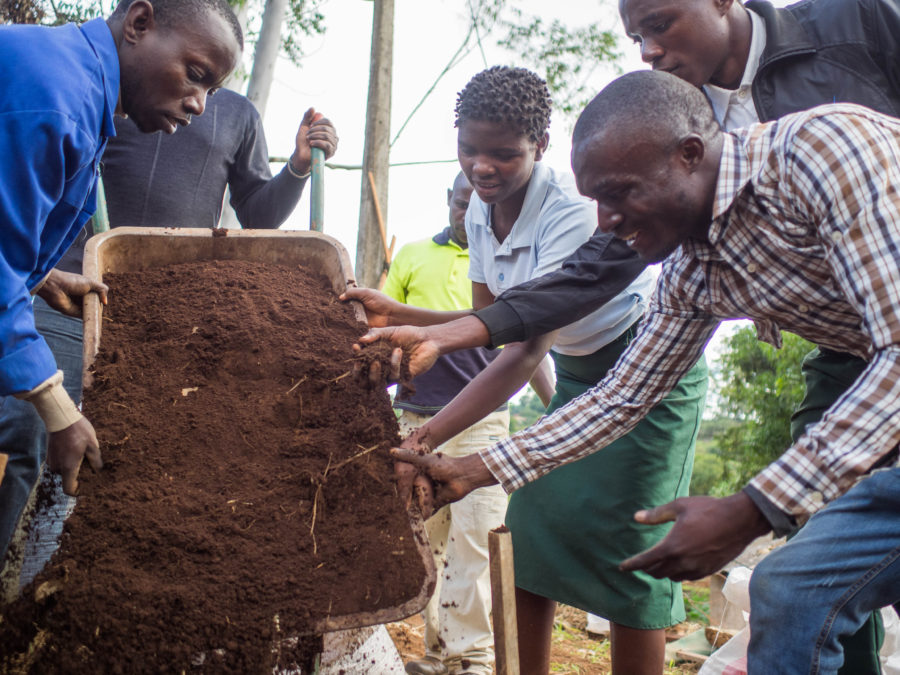
Adding composted cow manure to the soil to bolster nutrients. Left to Right: Isaac da Costa, AMG; Juleita Eduardo, Student; Beneto Pessero, Student; Domingos Reis, LUPA.
The key? Methods for soil and water conservation.
Throughout the training, we taught that the earth is the bank into which we put water and nutrients, funds that we can tap into later to produce crops. By the last day, it was clear that the farmers really understood and were beginning to grasp the interplay of forest and farm, ground water and canopy.
I’ll be the first to admit that there is no silver bullet that will solve our conservation and livelihood challenges here on Namuli. But, this simple, effective agricultural approach that preaches water and soil conservation, might just be the entry point we have been searching for to start the conversation about larger scale nature conservation and natural resource management within local communities. We need nature conservation to achieve agricultural development, and need agricultural development to achieve nature conservation for Mount Namuli.
We’re calling it The Community Conservation Conversation (the Triple C Approach). It has a nice ring to it! In a week, I’ll be headed to Namuli with the field team to try our new agricultural approach to stimulate the community conservation conversation. With our new interdisciplinary plan that combines agriculture and nature conservation, this Legado: Namuli train is leaving the station.
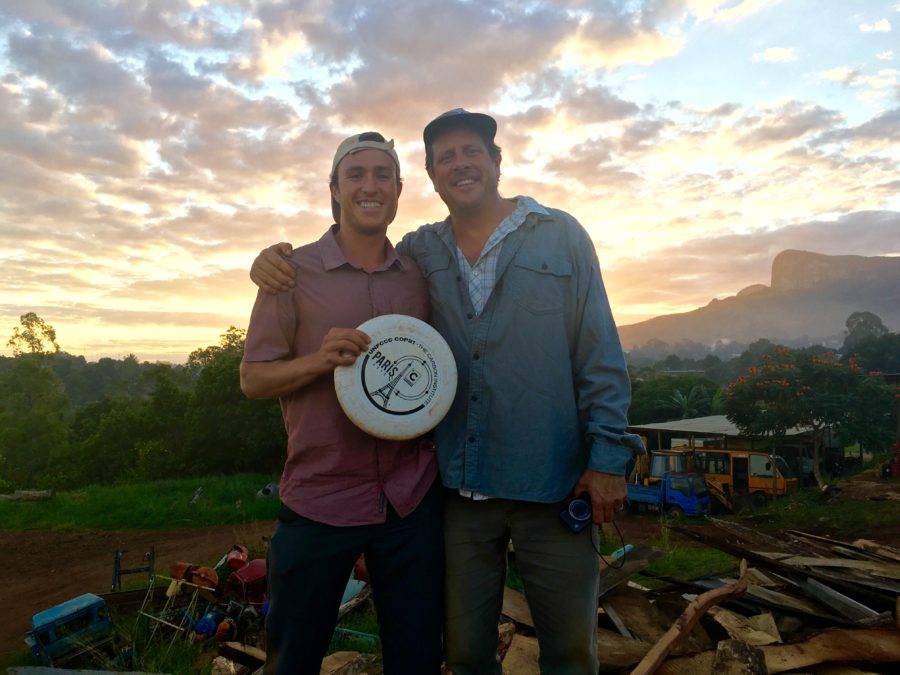 Eric Wilburn is Legado: Namuli’s Program Manager. He is heading into his second year of graduate studies at Stanford in the area of water and sanitation. He’s a former US Peace Corps Volunteer, is fluent in Portuguese, is a force on the Ultimate field and bears a strange resemblance to Jonathan Taylor Thomas.
Eric Wilburn is Legado: Namuli’s Program Manager. He is heading into his second year of graduate studies at Stanford in the area of water and sanitation. He’s a former US Peace Corps Volunteer, is fluent in Portuguese, is a force on the Ultimate field and bears a strange resemblance to Jonathan Taylor Thomas.
Photos in this story are by Legado 2015 Fellow, Grant Bemis.

